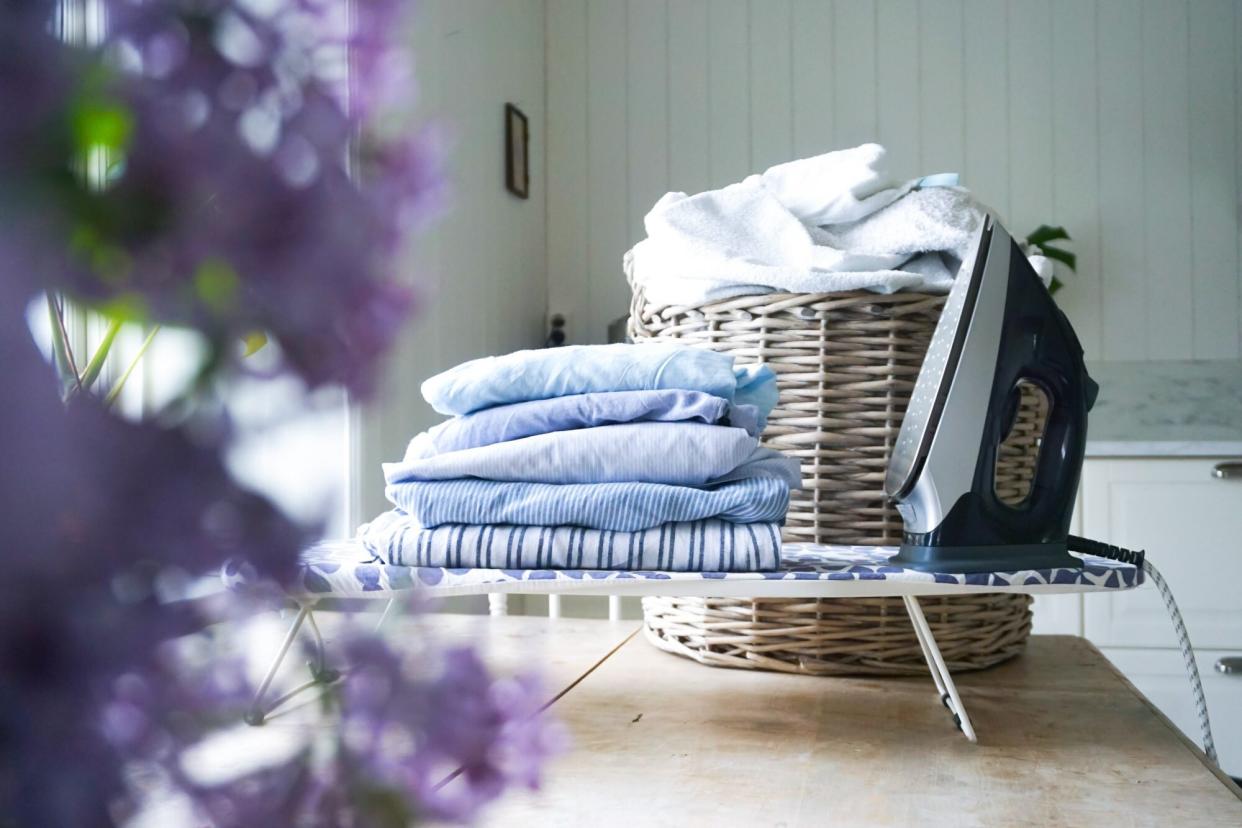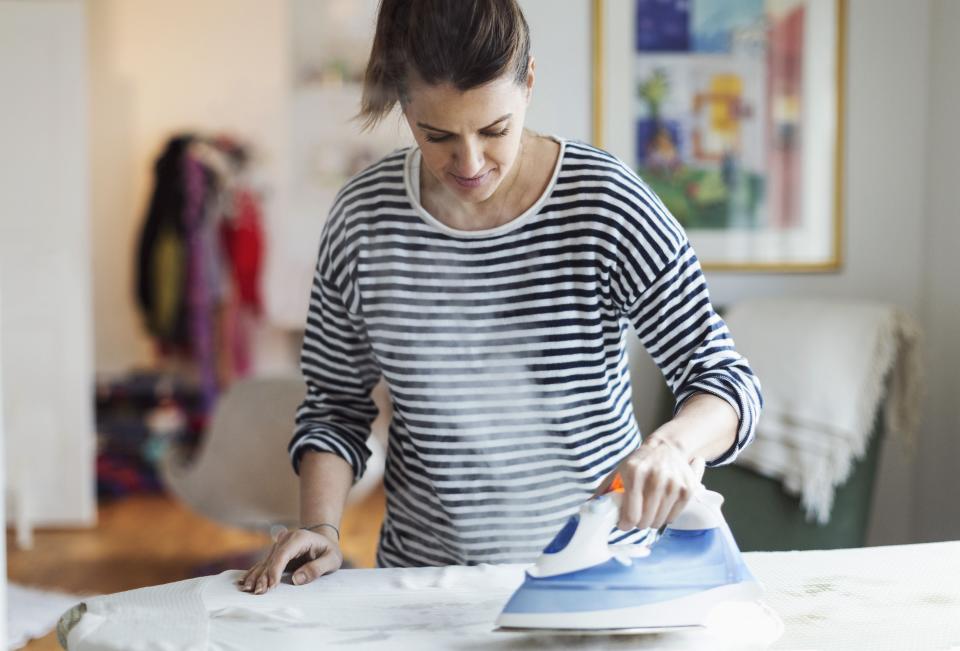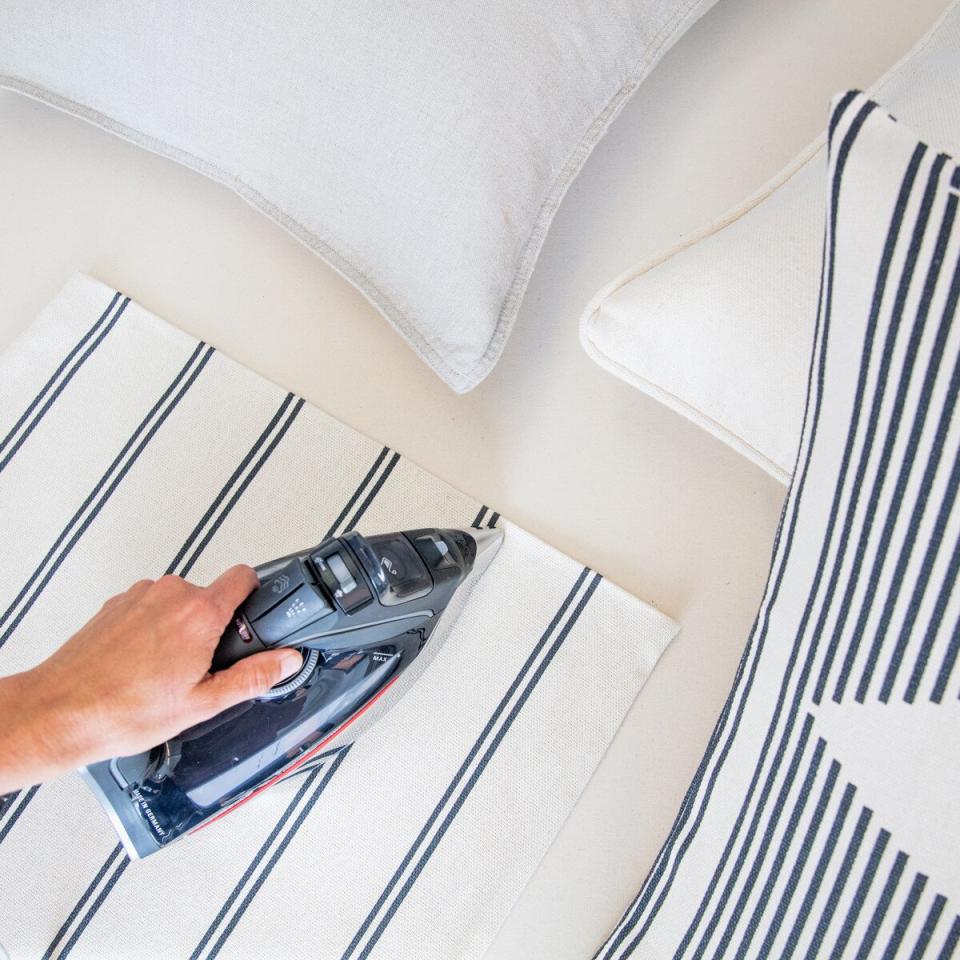How to Iron Every Piece of Clothing—and Choose the Right Temperature Setting for Each Fabric

Merethe Svarstad Eeg / EyeEm / Getty Images
TABLE OF CONTENTS
On This Page
Understanding Iron Temperature Settings
Prep for Ironing
How to Iron Clothes
Ironing Tips by Fabric Type
Using the Steam Setting
How to Remove Scorch Marks
Nothing puts a damper on a sophisticated outfit like wrinkles. While there are plenty of great steamers on the market, ironing is still one of the best ways to make your clothes feel crisp and smooth. But not every garment should be ironed the same way—and your heat setting will vary by fabric type. To help you press your dresses, pants, blouses, and more to perfection, we asked experts for their best ironing techniques and tips.
Related: The Best Irons to Help You Press, Steam, and Perfect Your Laundry
Understanding Iron Temperature Settings
Before you iron your garments, you'll need to understand the appliance's temperature settings and how they impact each fabric, says Rechelle Balanzat, a laundry and dry cleaning expert and the founder of Juliette, a premium laundry cleaning service based in New York City. "Using the wrong heat setting can make removing wrinkles more difficult and can even result in damaged fabric," she says.
Household irons usually have seven heat settings that range from low to high, says Michelle Feinberg, the owner and creative director at New York Embroidery Studio. Here are the best temperature settings to use by fabric, according to the experts:
Low Temperature
This is your iron's first (and lowest) temperature setting, which hits roughly 275 degrees. This level should be used on silk and synthetic fabrics like nylon, lycra, and acetate.
Medium Temperature
The medium settings (usually two and three) are around 300 degrees and should be used on lace, polyester, and wool.
High Temperature
The highest temperatures are four and up; all are above 400 degrees. These heat levels are best reserved for denim, cotton, linen, and viscose.
Prepare to Iron
Note that an iron takes about 10 minutes to reach your desired heat setting, so give it time to warm up before you start. If you're ironing multiple items composed of different fabrics, begin with the garments that require the coolest temperature, says Balanzat. "You can always increase the heat, but it takes longer to cool an iron," she says. "In general, synthetic fabrics should be ironed first, followed by cotton and linen fabrics."

Getty Images
How to Iron Every Piece of Clothing
Whatever clothing type you're ironing, run your iron firmly and slowly across the fabric, being careful not to iron any wrinkles in place, says Balanzat. "Never rest your iron in a single spot on the fabric you're ironing," she says. "This could cause burns or even spark a fire."
Materials You'll Need
Clean iron
Ironing board
Water in a spray bottle
Here are Balanzat's best tips on how to iron every garment:
Shirts
Begin by laying the shirt flat. Do not spread the fabric and make sure that every section you iron stays flat on the board.
Start with the sleeves, beginning with the cuff and moving the iron up to the shoulder. As you continue ironing the rest of the shirt, the sleeves will be able to hang off the sides of the board without wrinkling.
Iron the front and back of the shirt next, starting from the center; move the iron side to side.
Use the tip of the iron to smooth wrinkles around the buttons.
Next, iron the collar up and down.
Remember to keep any pleats in place and smooth them out when ironing.
Pants and Jeans
Using gentle pressure, iron pants from back to front and bottom to top.
Iron the back first with one leg on the board. Start from the ankle and work your way up to the top with the iron.
Next, flip over the leg to the front and begin ironing from ankle to crotch. When working on the front of the pants, but use a wiggling motion.
If the pants have a crease, fold down the crease and iron.
Skirts
When ironing skirts, work from bottom to top.
First, iron the body of the skirt from back to front.
Next, iron the waistband while moving the iron side to side.
If the skirt is pleated, attach a paperclip or clothespin to each pleat before ironing. Make sure to press the iron at the top of each pleat and work your way down.
Dresses
Iron a dress' removable features (like a belt) first.
If the dress has a collar, iron that next using a side-to-side motion.
Check to see if the dress has loose flaps on the reverse edge. If so, iron those next.
Move onto the shoulders and sleeves of the dress; iron with a side-to-side motion from bottom to top.
The last step is to iron the body of the dress from top to bottom.

Shanna Sullivan
Ironing Tips for Every Fabric Type
You also have to consider a garment's fabric when you iron it, since most fabrics require different care instructions. Whatever fabric you're working with, test the heat on each piece in an inconspicuous area before fully ironing it, our experts note.
Wool
You shouldn't iron wool directly, says Feinberg. "Place a damp cloth over it and use a medium heat," she says. "Be sure not to press too hard while ironing."
Linen
To make linen clothes crisp, iron on a high setting while the fabric is still damp, says Feinberg.
Silk
Since silk is a delicate fabric, experts recommend ironing on the lowest heat setting possible. Make sure to turn your silk garment inside out and place it between an ironing cloth or sheet before gently moving the iron; don't leave it in one place for too long or it could burn. When in doubt, turn to a steamer to smooth out silk—this is often safer.
Acetate
Flip acetate fabrics inside out and iron them on the lowest setting available on your iron.
Cotton
Ahead of ironing a cotton garment, lightly spritz water from a spray bottle on stubborn wrinkles. Continue by ironing at a high temperature setting and applying a pressing motion to create the best results, says Balanzat.
Polyester
Lightly dampen polyester materials and use a low- to medium-heat setting to knock out wrinkles. From there, iron this type from top to bottom, says Balanzat.
Lace
Another delicate material, lace also requires cloth between the iron and the fabric to preserve its quality.
Rayon
Turn this garment inside out and use a low heat setting. "Rayon requires a tedious technique while ironing small portions of the fabric in order to avoid stretching out the fabric," says Balanzat.
Using the Steam Setting
Your iron's steam feature can effectively help remove wrinkles, but you'll need to mind your material. Wool, cotton, and polyester are all fabrics that respond well to the steam feature, says Feinberg. Otherwise, suede, velour, velvet, and waxed fabrics should never be steamed; the combination of heat and moisture would damage them. "Special care should be taken while steaming any garment. Avoid steaming any plastic parts, such as buttons or other embellishments, as these will melt with steam," says Feinberg.
How to Remove Scorch Marks
If you accidentally scorch a garment, it may be possible to get the mark out, so long as you act promptly and don't allow the mark to set, says Feinberg.
Materials You'll Need
Laundry detergent
Oxygen bleach
White distilled vinegar
Follow Feinberg's best practices to remove scorch marks from fabrics:
Rub laundry detergent on the spot with your fingers or a soft brush.
Let the detergent soak in for about 10 minutes and then rinse with the hottest water the fabric will allow.
Wash with detergent and oxygen bleach if safe.
If the mark is slight and you need to use the scorched item quickly, rub white distilled vinegar on the area and launder.

